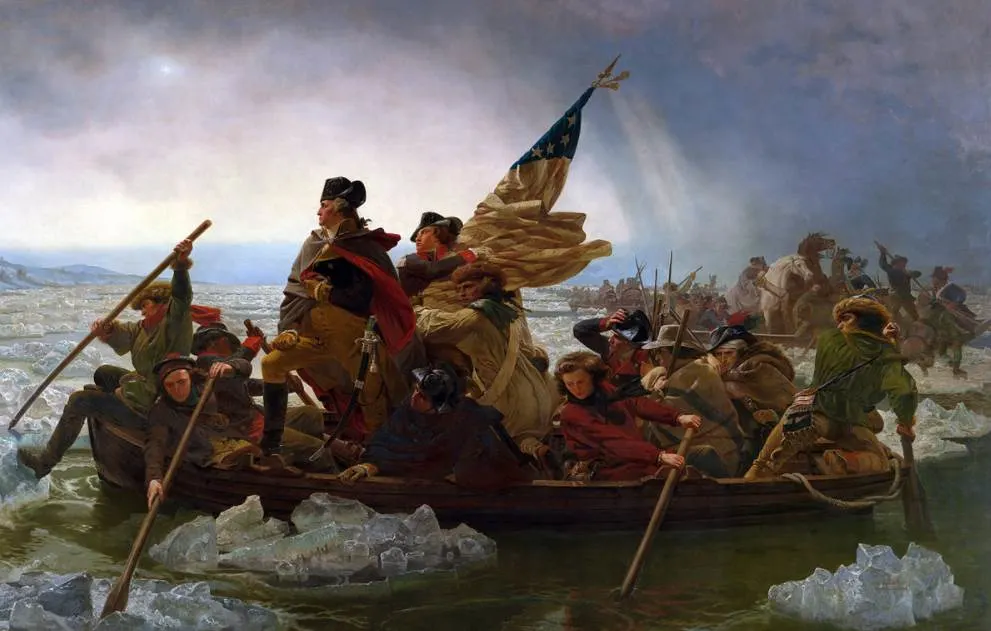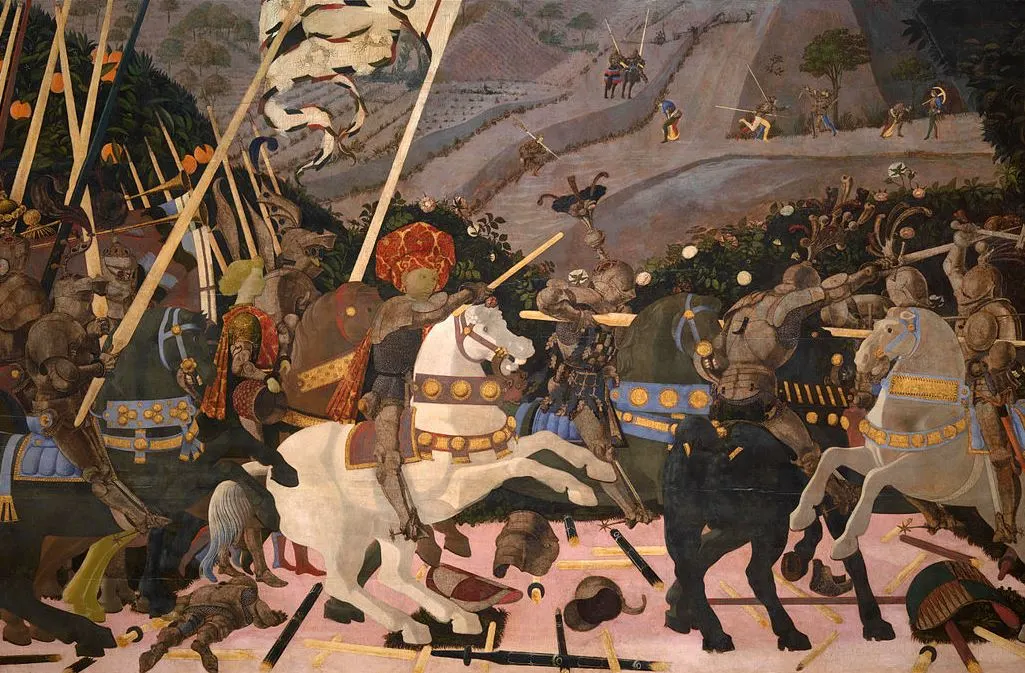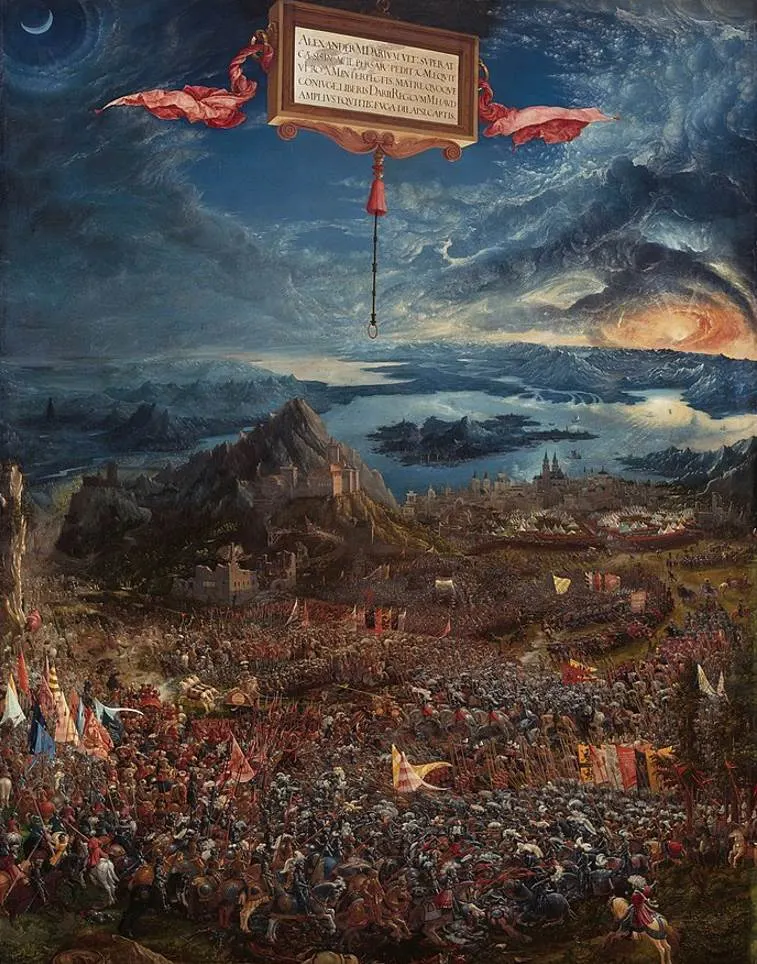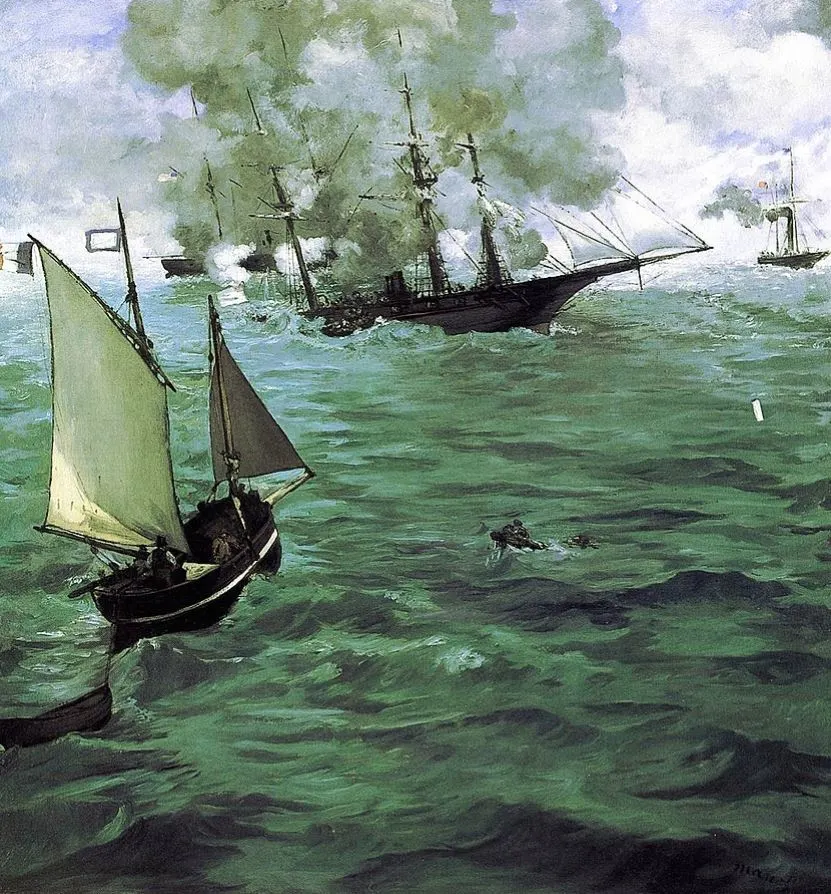The most devastating military conflicts in history, usually fought on a large battlefield, have shaped the world we live in today.
These epic events have served as a source of inspiration for artists for centuries and as you surely expected, many of the most famous battle paintings are huge.
Another common factor in these monumental artworks is the sense of heroism that many painters integrated. This was usually in sheer contrast with the terrible situation in real life.
Ranging from the late Middle Ages to modern times, here are some of the most remarkable paintings of battles you’ll ever come across.
1. The Surrender of Breda – Diego Velázquez
- Date created: 1634-1635
- Dimensions: 307 × 367 centimeters (121 × 144 inches)
- Location: Prado Museum, Madrid, Spain
The Surrender of Breda is a painting by Diego Velázquez (1599-1660), one of the most famous Spanish artists in history. Even though the smoke is still fuming on the battleground in the background, it depicts the moment that the Sutch hand over the keys to the city of Breda.
The Spanish are on the right and are led by Ambrogio Spinola, a general in the Spanish army who conquered the city after an extended siege between 1624 and 1625. Remarkably, Velázquez visited Italy together with Spinoza so he received an accurate description of the events before working on this painting.

2. The Battle of Trafalgar – J.M.W. Turner
- Date created: 1822-1824
- Dimensions: 261.5 x 368.5 centimeters (102.9 x 145.07 inches)
- Location: National Maritime Museum, London, United Kingdom
The Battle of Trafalgar is the title of a painting by J.M.W. Turner that is fully known as “The Battle of Trafalgar, 21 October 1805.” It depicts the heroic Battle of Trafalgar which was fought between the Royal Navy and a coalition between the French and Spanish during the Napoleonic ars in the early 19th century.
It’s during this battle that Admiral Nelson was fatally shot from a nearby French ship and passed away. This painting was commissioned by King George IV to decorate St James’s Palace, a royal palace in London. It was the only royal commission that Turner ever received during his long career.

3. Washington Crossing the Delaware – Emanuel Leutze
- Date created: 1851
- Dimensions: 378.5 × 647.7 centimeters (149 × 255 inches)
- Location: MET Museum, New York City, United States
Washington Crossing the Delaware is an enormous painting by German-born American artist Emanuel Leutze (1816-1868), a man renowned for his monumental history paintings. It depicts the moment that General George Washington crosses the Delaware River on the night of December 25–26, 1776.

This moment was the prelude to the successful surprise attack the following morning at the Battle of Trenton in New Jersey during the American Revolutionary Wars. Remarkably, Leutze painted two more versions of this work. One was destroyed in Germany during World War II and a smaller version was sold for $43 million at auction in April 2022.

4. The Battle of San Romana – Paolo Uccello
- Date created: 1438
- Dimensions: 182 × 317 centimeters (71.65 x 124.8 inches)
- Location: National Gallery, London, United Kingdom
The Battle of San Romana is the title of 3 different paintings by Paolo Uccello (1397-1475), a Florentine painter who was active during the early Renaissance. It depicts the battle that took place in 1432 and which was fought between Sienese and Florentine forces about 48 kilometers (30 miles) outside of Florence.
This Renaissance painting was one of the first artworks in history that perfected the technique of linear perspective. After all, Uccello was a mathematician as well who used his knowledge to develop this technique in the 15th century. Each of the 3 paintings is over 3 meters long and was painted using egg tempera on wood panels.

5. The Death of Major Peirson – John Singleton Copley
- Date created: 1783
- Dimensions: 251 × 365 centimeters (99 × 144 inches)
- Location: Tate Britain, London, United Kingdom
The Death of Major Peirson is a painting by John Singleton Copley (1738-1815) that goes by the complete title of “The Death of Major Peirson, 6 January 1781.” We can see huge British flags waving in the center of this work, something that indicates that this battle resulted in a victory for the British.
The Battle of Jersey was France’s failed attempt to invade the island of Jersey in the Channel just off the coast of France. About 1,000 French soldiers tried to capture the island but failed to achieve their goal. It did, however, result in the death of Major Francis Peirson, the British Army officer on the island at the time.

6. The Massacre At Chios – Eugène Delacroix
- Date created: 1824
- Dimensions: 419 × 354 centimeters (164 × 139 inches)
- Location: Louvre Museum, Paris, France
The Massacre At Chios is an early painting by Eugène Delacroix (1798-1863), the leading French artist of the Romantic era in the 19th century. It’s another famous battle painting that shows the aftermath of the battle that took place on the Grek island of Chios during the Greek Revolutionary Wars.
The painting is dominated by suffering victims of the Chios Massacre conducted by Ottoman forces who are laying in the foreground. The smoke emerging from the background further emphasizes the dire situation as another group of Greeks is held into position by the invaders. This dramatic event happened in 1822 and cost the lives of thousands of people.

7. The Death of General Wolfe – Benjamin West
- Date created: 1770
- Dimensions: 151 × 213 centimeters (59 × 84 inches)
- Location: National Gallery of Canada, Ottawa, Canada
The Death of General Wolfe is the title of a painting by British-born American artist Benjamin West (1738-1820), a painter who is best known for his monumental history paintings. This work depicts an event that took place at the end of the Battle of Quebec in September 1759.
General James Wolfe of the British army lost his life during the final moments of this battle which resulted in a British victory against the French. What’s remarkable about this artwork is that it’s an inaccurate depiction of the event because several people who are in it were not present at the battle. The military leaders also wear modern clothes instead of contemporary ones.

8. The Battle of Alexander at Issus – Albrecht Altdorfer
- Date created: 1529
- Dimensions: 158.4 × 120.3 centimeters (62.4 × 47.4 inches)
- Location: Alte Pinakothek, Munich, Germany
The Battle of Alexander at Issus is the title of a stunning painting by Albrecht Altdorfer (1480-1538), a German artist who is best known today as a landscape painter and founder of the Danube School. This work depicts the Battle of Issus which took place in the year 333 B.C.
It was fought between Alexander the Great and Darius III of Persia and resulted in a victory for Alexander. It was a crucial event because it became the prelude to his conquest of the Persian Empire. This work is a prime example of heroic landscape painting that became popular during the Renaissance era.

9. The Battle of the Kearsarge and the Alabama – Édouard Manet
- Date created: 1864
- Dimensions: 134 × 127 centimeters (53 × 50 inches)
- Location: Philadelphia Museum of Art, Philadelphia, United States
The Battle of the Kearsarge and the Alabama is a painting by Édouard Manet (1832-1883) that depicts the Battle of Cherbourg during the American Civil War in 1864. This battle was decided by just two ships, the Union cruiser USS Kearsarge and the Confederate raider CSS Alabama.
What’s remarkable about this particular battle is that it took place off the coast of France and many spectators were able to witness the event from the coast of France. Manet didn’t see it himself but was able to accurately depict the event based on first-hand witnesses. The battle resulted in the USS Kearsarge sinking the CSS Alabama.

10. The Intervention of the Sabine Women – Jacques-Louis David
- Date created: 1795-1799
- Dimensions: 385 × 522 centimeters (152 × 206 inches)
- Location: Louvre Museum, Paris, France
The Intervention of the Sabine Women is another enormous painting by Jacques-Louis David (1748-1825), the most renowned Neoclassical artist of his generation. It depicts a moment during the early years of Rome, shortly after the Romans kidnapped the women of a nearby tribe.
This amazing work of art has a remarkable backstory because David got the idea when he was in prison during the French Revolution. His wife visited him and it inspired him to paint this work which commemorates the brave Sabine Woman Hersilia, the wife of Romulus and the daughter of Titus Tatius, the leader of the Sabines. She stands right in between her husband and father in an attempt to end the battle.
